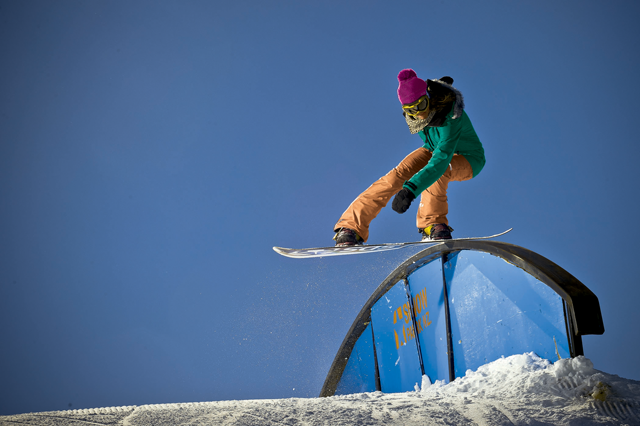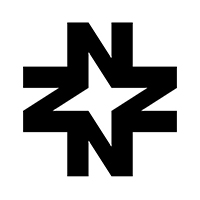
Last month, Whitelines started an online debate as to why female snowboarders are so chronically under-represented in the media. The same point kept coming up again and again – sponsors just don’t see female riders as being as “marketable” as men, or at least not for their riding.
Evidence that the snowboarding industry takes a one-sided approach is everywhere. All you need to do is walk into a snowboard shop and you’ll see that a fraction of the gear is aimed at women compared to men. Watch any major snowboard movie and you might manage to catch a few seconds of the team’s token female rider promoting their limited range of women’s gear. Flick through the pages of a snowboarding magazine and you’ll notice most of the articles and adverts feature men – unless it’s a picture of a semi-clad woman who’s most likely never strapped a board to her feet, advertising men’s snowboard boots. When you Google “female snowboarders”, the first thing that comes up is an article entitled, ‘The 20 Hottest Professional Female Snowboarders’. It’s not that women don’t feature in snowboarding media, it’s just that all too often they’re represented for the wrong reasons.
Why is snowboarding still stuck in the dark ages when it comes to attitudes towards its female contingent?
Female riders are not only misrepresented in the media, they’re fighting doubly hard to gain recognition among their male peers in the snowboarding industry. Take backcountry riders, for example. The battle for woman to get onto a snowboard crew is incredibly hard, much harder than it is for their male peers. And this is only the beginning. Once they’ve made it onto a crew, they have to convince sponsors they’re worth investing in.
When I questioned pro rider Marie-France Roy on the subject, she notes that it became particularly hard when the recession hit. “I feel like it was going good for sure but the last few years of economic recession is affecting everyone and unfortunately women are never the priority in this male dominated sport.”
These are the last women you’re likely to see posing seductively for a “hottest female snowboarders” feature. They are women who’ve spent their entire career striving to earn credibility and recognition for their ability in a male dominated environment. What could possibly be more demeaning and demoralising?

So why is snowboarding still stuck in the dark ages when it comes to attitudes towards its female contingent? It’s undoubtedly due to the fact that snowboarding is a male-dominated sport, both professionally and recreationally. For brands and the media, it comes down to simple economics. They have to invest more in catering to the larger sector of the market. If this means putting boobs on boards, then they’ll do it, regardless of the fact that it objectifies the smaller portion of their market.
Of course, this kind of sexism is by no means unique to snowboarding. It’s symptomatic of a wider problem that blights our entire society. However, in an arena where the ratio of women to men is markedly small, the issue becomes more pronounced.
Snowboarding is also a sport that’s driven by the desire to see riders go bigger and more extreme. As long as audiences place more of an importance on this over style, women are always going to take a back seat.
Fortunately change does seem to be afoot. Over the past few years we’ve started to see an increase in the number of women getting freestyle and street parts in films. Consequently these riders also get more coverage in high-profile snowboarding magazines.

Even female backcountry riders are starting to get more exposure. Helen Schettini has made it onto both the YES and Adidas teams, while gaining great coverage alongside Jake Blauvelt, Eric Jackson et al. Last month’s issue of Whitelines alone features a five-page article on backcountry legends Marie-France Roy, Robin Van Gyn and Maria DeBari on an epic splitboarding adventure in the backcountry of Golden, BC.
Brands that cater exclusively to women, such as Roxy and Nikita seem to be gaining a stronger market presence. All-female crews, such as Lipstick Productions are producing more and more content.
However, there’s still a long way to go before we see female riders receiving the same level of exposure to men. I asked another backcountry rider, Leanne Pelosi, whether she thought women are starting to achieve better representation. She said: “I feel that the best female backcountry riders in the world are getting a tiny bit of exposure, but not even close to what our equal counterparts of the male gender are getting!”
One thing that became evident from the Whitelines debate is that there’s a great deal of support from the snowboarding community for female riders. Both male and female riders want to see coverage of women ripping alongside men in all areas of snowboarding, not just looking pretty in advertising campaigns. We have to hope this filters through to the industry, so that we can finally see female snowboarders getting the recognition, financial support and exposure they deserve.
Read more from Cat Hart on her blog Riding Switch







